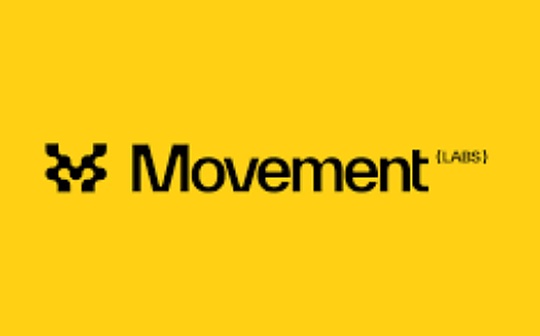
Note: On April 25, 2024, blockchain development team Movement Labs announced that it had completed a US$38 million Series A financing.Movement Labs aims to introduce Move VMs to Ethereum, and Movement Labs launches Ethereum L2 M2 based on Move VMs, allowing developers to write applications running on Ethereum with Move.Movement Labs investor Placeholder wrote an article to interpret Movement Labs.
Original author Joel Monegro, managing partner of Placeholder, translated by Bitchain Vision 0xjs.
EVM has been the most popular blockchain operating system since Ethereum was launched nearly a decade ago.However, few developers prefer to develop using their native programming language Solidity; some even liken this experience to “chewing glass.”Nevertheless, entrepreneurs chose it because it benefits Ethereum’s users, assets and liquidity.But if we want the number of on-chain applications to increase by 10 times, we have to have 100 times the number of developers who can build them.To do this, we must make it easier for ordinary programmers to write complex smart contracts while improving the security and scalability of the underlying infrastructure.This is the core commitment behind the Move programming language and the emerging networking ecosystem that uses the language.
Solidity developers are in trouble because its execution environment cannot easily scale, lacks basic security features, and imposes unintuitive programming paradigms.Smart engineers and thousands of dollars in audits can solve these three problems, but that’s exactly what the problem is: It requires highly mature developers and a lot of money to deliver secure, scalable, and complex smart contract applications on the EVM network.
Move is a smart contract programming language developed by Facebook as part of its Libra blockchain project.Libra died in politics in 2020, but they left behind some great open source technologies for a global scale.Move is created around three main values: security, functionality, and usability.It provides powerful security by default, enabling highly complex applications while keeping it simple and easy to use.If we have to summarize the effect with a provocative sentence, 1x Move developers can deliver better applications than 10x Solidity developers.
Aptos and Sui
Of course, the application you wrote in Move ends up running on the blockchain.Both Aptos and Sui networks are separated from the Libra project.They belong to the next generation of blockchains that provide ultra-high throughput with low transaction fees, similar to Solana (a more mature ecosystem with many advantages, but with the complexity of Rust, the talent to build applications is more demanding).Aptos and Sui use a variant of Move, with different underlying network architectures.Aptos Move is closest to the original specification developed by Libra and the network uses familiar consensus mechanisms.Sui Move introduces an object-oriented programming paradigm that traditional non-crypto developers are more familiar with in smart contracts, while the network uses a DAG-based consensus system architecture instead of a typical blockchain.Each approach has its pros and cons, and has written a lot about these differences, so we don’t have to repeat the details here.More importantly, developers can choose the one that suits them best.
Although both are emerging networks, Aptos and Sui stand out and become strong contenders in the top echelons of cyber warfare.Few other chains can deliver the same high performance at the lowest cost and provide an uncompromising developer experience that translates into better applications that are easier to create.
Modular Move
While Move directly challenges Solidity as a language, Aptos and Sui compete more with highly integrated networks like Solana than with Ethereum.Given that one of the main selling points of the modular movement is the ability to layer custom execution environments on top of the Ethereum ledger, alternative virtual machines and languages should not be offensive to Ethereum.So if you like Move but prefer the Ethereum ecosystem, its modular features can also give you both fish and bear’s paw.
This is exactly what Movement Labs implements with its new Rollup and SDK.Their tool and service stacks include (1) public Move VM (MVM) Ethereum Layer 2, (2) Movement SDK, and (3) decentralized shared sorter.
M2 is the first Move-based L2 on Ethereum, which allows developers to write applications running on Ethereum with Move.It can run Aptos and Sui Move, so developers who need both don’t have to compromise.It also includes an EVM proxy that enables developers to mix and match Move and Solidity contracts in the same execution environment.It also allows users to use the Move app through their existing Ethereum wallet and pay for transaction fees with ETH.It can be called “Move-EVM” or MEVM.Think of it as a multi-execution environment that maximizes developer choice without sacrificing access to established EVM infrastructure.
M2 is built using the Movement SDK, an open source framework for deploying custom MEVM Rollup on Ethereum or other EVM networks.This SDK allows developers to launch application-specific Rollup based on Move using the same technology as M2.Due to its architecture, the M2 cannot match the absolute performance of Aptos or Sui.However, as a trade-off, M2 can do things that Aptos and Sui can’t do, and the Movement SDK provides a way for developers who need this level of scale to deploy their own MEVM environments and compare them with other emerging technologies as neededIn combination (e.g., M2 uses Celestia for data availability).
Finally, the Shared Sorter manages the connection between all MEVM rollups (including M2) and Ethereum.Because it is decentralized, all MEVM networks are guaranteed to be secure.Since it is shared, it can reduce the cost for all those who use it, as it can bundle transactions from multiple parallel Rollups in the same batch, making them interoperable.
The main criticism of modularity is the complexity of managing multiple components, which is a fact.But this does not detract from the long-term value of modularity.As far as Movement is concerned, it allows them to combine elements of Aptos, Sui and Ethereum that none of these individual networks can be implemented separately.This combination maximizes developer flexibility without sacrificing access to existing EVM resources and infrastructure.
Moving Forward
Lack of scalability and high transaction fees used to be the main bottleneck of Web3.Today, block space is abundant and transaction fees are inexpensive, but for most developers, building secure smart contracts is still quite difficult.Most developers are not cryptocurrency developers yet; to change this, we need to improve the developer experience without mercy until it is easier to develop on Web3 than on Web2.Our bet on Move comes from the belief that it provides a superior entry point for new developers to build on-chain applications thanks to Move’s inherent security and scalability capabilities.
This doesn’t mean we are no longer optimistic about any ecosystems we support, including Ethereum and Solana (Anza is working on adding Move support, but there is controversy).Tribalism leads many to believe that supporting an option requires opposing what they think of as an opponent, for example, supporting Solana means opposing Ethereum, or supporting the Move ecosystem means opposing Solana, and so on.This diode mindset ignores the broader reality that the prosperity of the industry depends on consumer choice and competition.
It is also worth highlighting that despite limitations, the EVM standard will not disappear anytime soon, and its continued dominance demonstrates the power of first-mover advantage and network effects.Instead, its limitations will be transcended by the abstraction layer built on it.In hindsight,The evolution of blockchain operating systems will be similar to that of computers: We start with the original version and create increasingly complex, yet more developer and user-friendly systems on top of them.Consider that the BIOS in a computer is the lowest level operating system that handles communication between hardware and operating systems, but most users never interact with it, and few people know it exists.Or, in the first decade, how Windows was built on top of more primitive MS-DOS.EVM is likely to follow a similar path to become a lower level primitive, building a more powerful system based on this, which is why it is especially interesting to include EVM in the Movement Labs stack.
After the development of Web2, it is clear that there has been a direct correlation between the simplicity of development and the quality of application over the years.What Aptos, Sui and Movement bring to this space brings us closer to this vision and we are excited to see developers build the future with them.







